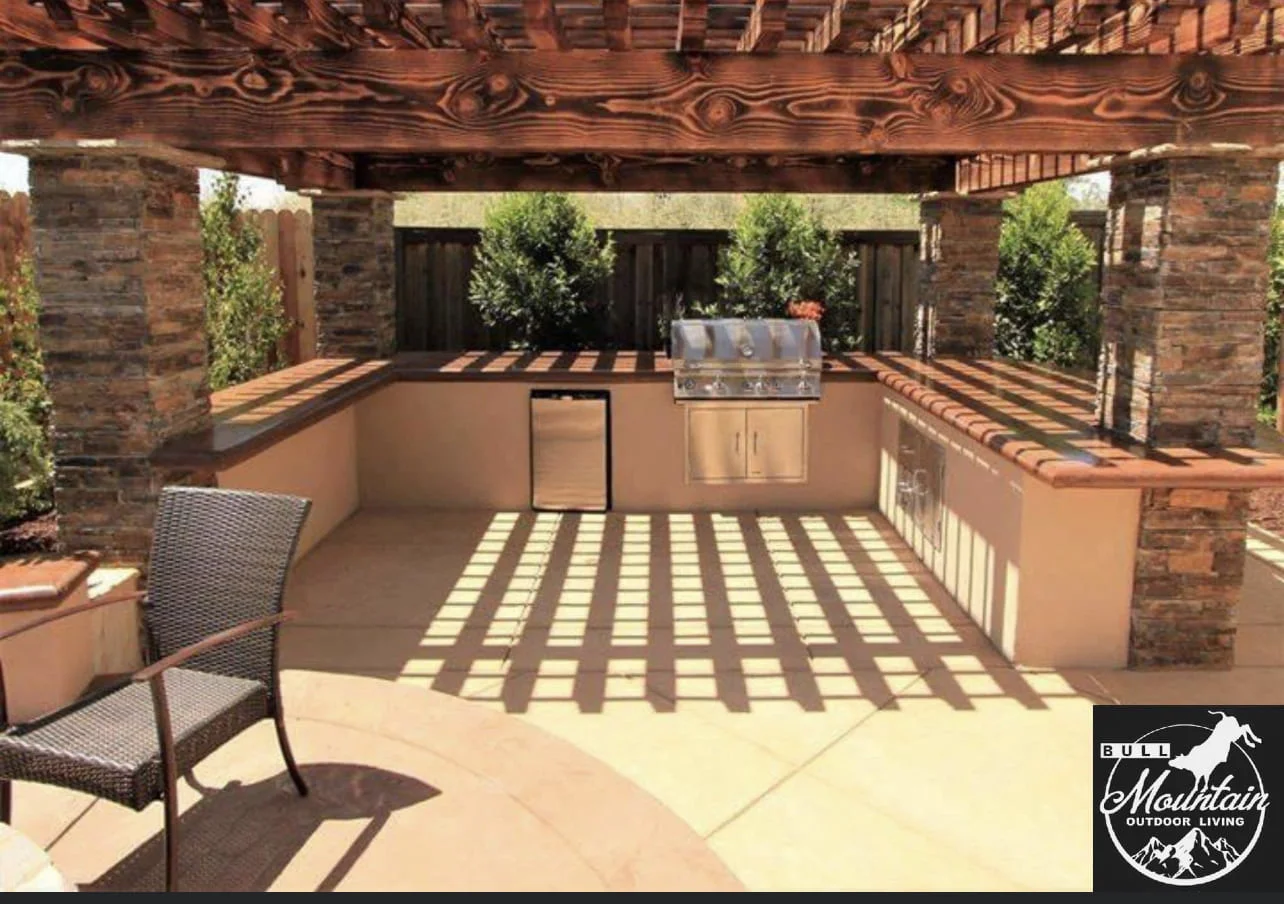
A patio enclosure and a sunroom are both types of structures that allow you to enjoy the outdoors while being protected from the elements. Still, they have fundamental differences in design, functionality, and construction.
A patio enclosure, also known as a patio cover, is typically an open structure. It’s designed to shield the patio area from direct sunlight or light rain, allowing you to enjoy your outdoor space in mild weather conditions. These enclosures are usually constructed from materials like aluminium or wood, and they can either be attached to your house or built as a free-standing structure. One of the major benefits of a patio enclosure is its relative affordability. However, because it’s an open structure, it doesn’t offer full protection against more severe weather conditions.
On the other hand, a sunroom is a solid structure that’s fully enclosed with glass or a similar material. This design allows you to enjoy panoramic views of your outdoor space without being affected by harsh weather elements such as freezing cold, heavy rain, or sweltering heat. Sunrooms are often used as additional living spaces where you can relax, entertain guests, or even grow indoor plantings. While sunrooms provide a higher level of comfort compared to patio enclosures, they are also generally more expensive to construct, and may require special permits and adherence to building regulations.
Let’s explore the main differences between a patio enclosure and a sunroom:
1. Structure and Design: Key Difference Between a Patio Enclosure & a Sunroom
Patio Enclosure: A patio enclosure is a structure that surrounds an existing outdoor patio or deck. It is typically made up of walls constructed from screens or glass panels and may or may not have a solid roof. Patio enclosures are designed to provide a partially sheltered space, offering protection from insects, wind, and rain while maintaining an open-air feel. The patio enclosure design is relatively simple, providing a clear view of the surrounding landscape and allowing natural airflow, making it an inviting space for enjoying the outdoors.
Sunroom: A sunroom, also known as a solarium or four-season room, is a fully enclosed and insulated structure that is an extension of the main living area of a home. Unlike a patio enclosure, a sunroom is a dedicated indoor living space with glass walls. This design allows for maximum sunlight exposure and provides an immersive outdoor experience while remaining a comfortable living space year-round. Sunrooms are constructed to seamlessly blend with the home’s existing architecture, creating a cohesive and harmonious transition from indoors to outdoors.
2. Climate Control:
Patio Enclosure: Patio enclosures are not typically equipped with heating, ventilation, or air conditioning (HVAC) systems. While they offer some protection from the elements, they do not provide complete climate control. As a result, the temperature inside a patio enclosure can vary greatly depending on the weather conditions outside. In warmer climates, a patio enclosure may become too hot during summer, making it uncomfortable for extended use.
Sunroom: Sunrooms are designed to be fully climate-controlled, providing a comfortable and consistent indoor environment throughout the year. With integrated HVAC systems, sunrooms can be heated in the winter and cooled in the summer, allowing you to enjoy the space regardless of external weather conditions. This climate control ensures that your sunroom remains a welcoming and usable space during all seasons, making it an extension of your home’s living area.
3. Versatility:
Patio Enclosure: Patio enclosures are versatile spaces that can be used for various purposes, especially during milder weather. They are well-suited for outdoor dining, casual gatherings, relaxation, and enjoying the natural surroundings without being bothered by insects or strong winds. However, their limited climate control may restrict their use during extreme temperatures.
Sunroom: Sunrooms offer a high level of versatility due to their year-round usability and fully insulated design. They can serve as additional living areas, dining rooms, home offices, exercise rooms, or indoor gardens. With the ability to maintain a comfortable temperature regardless of the weather outside, sunrooms become a functional extension of your indoor living space, adding valuable square footage to your home.
4. Use and Functionality:
Patio Enclosure: Patio enclosures are intended to be semi-outdoor spaces, providing a seamless transition from your home’s interior to the surrounding outdoor environment. They allow you to enjoy nature, fresh air, and natural light while providing some shelter from the elements. Patio enclosures are particularly popular in regions with mild climates, where they offer a way to enjoy outdoor living without fully committing to a fully enclosed indoor space.
Sunroom: Sunrooms, on the other hand, are designed as true indoor living spaces that offer a direct and immersive connection to the outdoors. With walls of glass, they provide expansive views of the landscape and abundant natural light, creating a welcoming and inviting atmosphere. Sunrooms are well-suited for homeowners who seek to enjoy the benefits of the outdoors without the limitations of weather or insect interference. Whether it’s a sunny morning breakfast or a cozy winter gathering, sunrooms become a favored spot for various activities throughout the year.
5. Cost and Construction:
Patio Enclosure: Patio enclosures are generally more cost-effective compared to sunrooms. Their simpler design, fewer materials, and lack of HVAC systems make them a more budget-friendly option. The construction process for a patio enclosure is typically quicker and requires less intricate work, which can result in lower overall costs.
Sunroom: Sunrooms require extensive construction and specialized materials to achieve full insulation and climate control. Additionally, the installation of HVAC systems adds to the overall cost. While sunrooms may be a more significant investment compared to patio enclosures, their year-round usability and added functionality can make them a worthwhile long-term investment that enhances both your living space and the value of your home.
Both patio enclosures and sunrooms offer unique advantages and cater to different preferences and needs. Patio enclosures provide a more budget-friendly way to enjoy the outdoors while remaining partially sheltered. At the same time, sunrooms offer an immersive and fully climate-controlled indoor space that allows you to enjoy the beauty of nature throughout the year. The choice between a patio enclosure and a sunroom ultimately depends on your lifestyle, budget, desired level of comfort, and the purpose you envision for your outdoor living space. If you’re considering adding either of these structures to your home, consulting with a professional contractor like Bull Mountain Outdoor Living can help you make an informed decision and create the perfect outdoor oasis that suits your needs and preferences.









